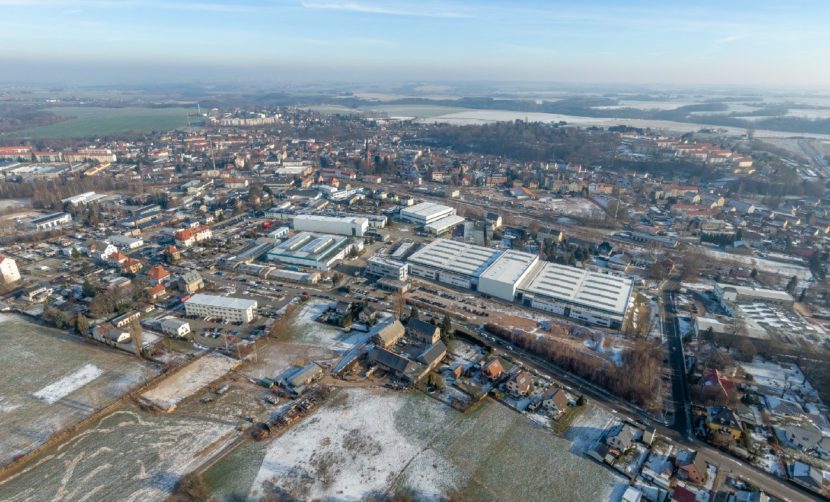Hainichen Subcamp
September 8, 1944 – mid-April 1945
![]()
Aerial photo of the former factory grounds in Hainichen, 2019 (Flossenbürg Concentration Camp Memorial / Photo: Rainer Viertlböck).
-
Prisoners
In two transports, 150 Polish-Jewish women came first, followed by 350 Hungarian-Jewish women from Auschwitz, along with a few Czech and stateless women.
-
Forced labor and quarters
Metal work (grinding, milling) on machine guns, launchers and mortars for the Framo-Werke GmbH. The prisoners and guard squads were quartered in a former needle factory, located one kilometer away from the workshop. The property was enclosed by a barbed-wire fence and two guard towers.
-
Guards
12 SS guards (partly from Hungary, partly members of the Vlasov army), 17 female overseers. Detail leader Wilhelm Loh refrained from taking any action against the brutality of the head overseer Gertrud Becker, who beat to death at least one woman.
-
Death toll
Five deaths are documented
-
Disbanding of the camp / end of the war
In panic, the camp was evacuated after an air raid. Within a week the women reached the Leitmeritz subcamp on foot and by train. They were then taken to Theresienstadt and liberated there by Soviet troops on May 8, 1945.
-
Commemoration
In November 2007, a commemorative stone in the cemetery was unveiled, memorializing the women who died in the Hainichen subcamp
